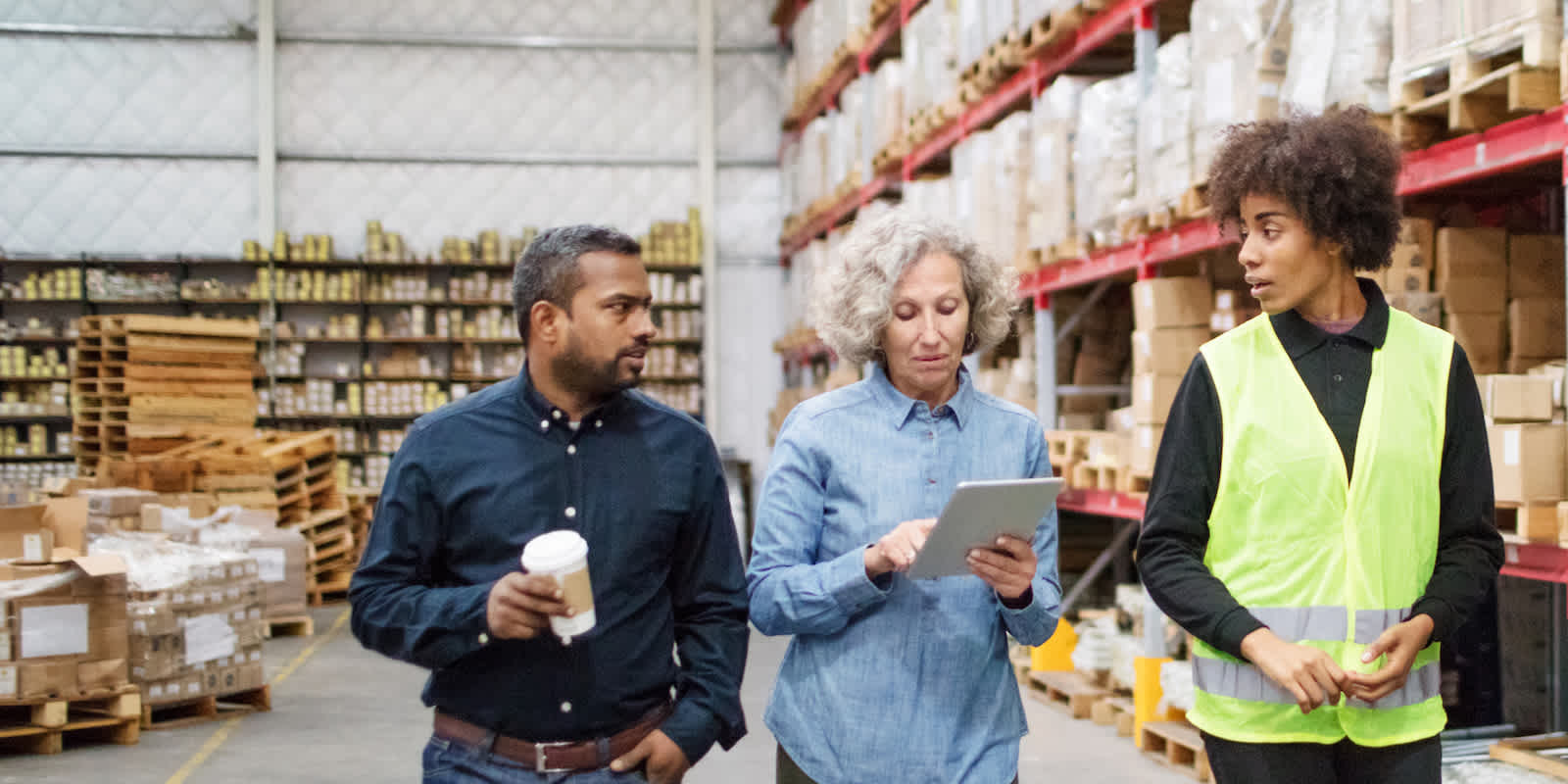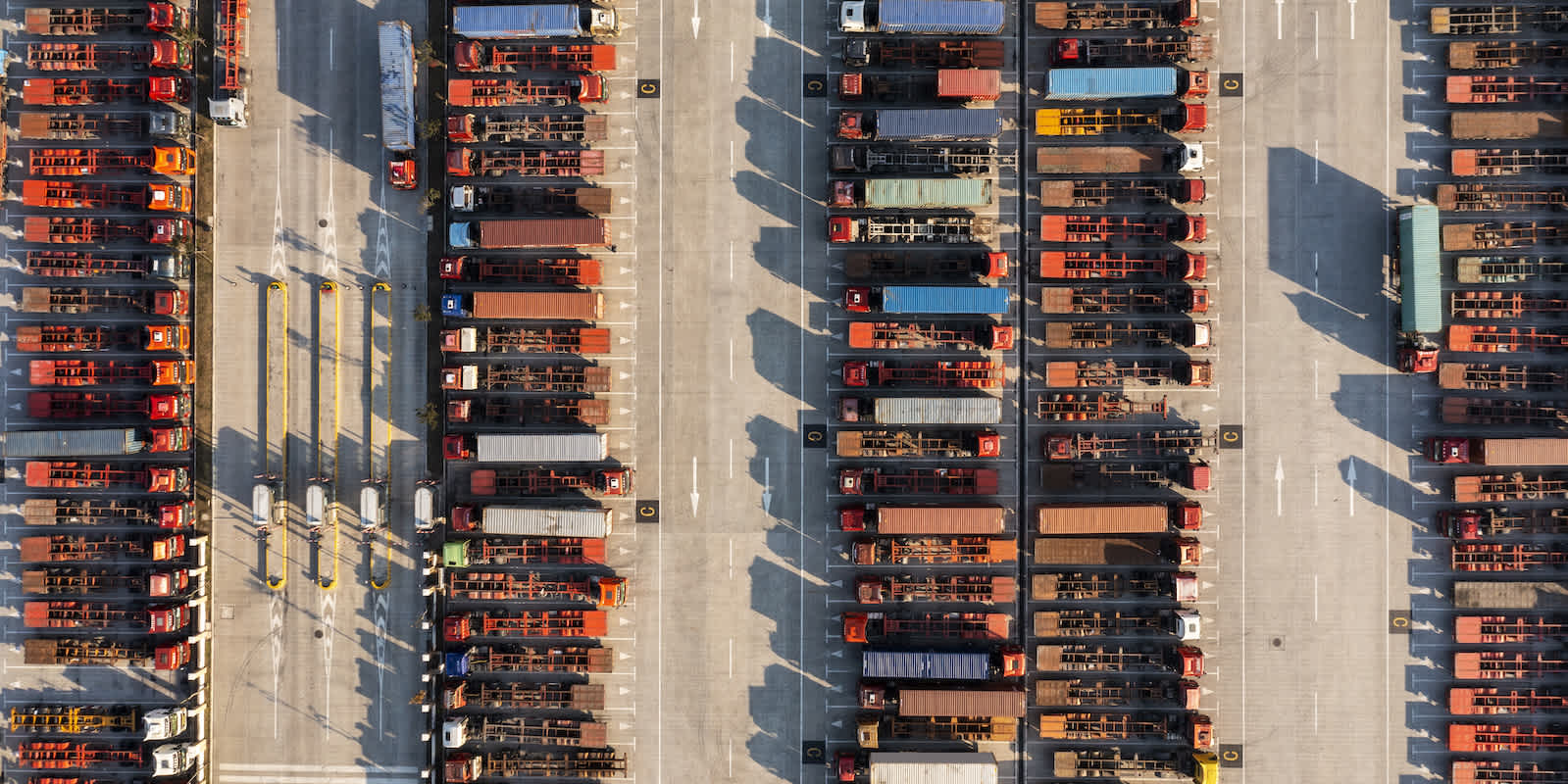
07.04.2023
Women in Supply Chain: Driving the Industry Forward
Women in Supply Chain: Driving the Industry Forward
“I find this the sexiest job in the world. For women on this call who are looking around at CEOs or women in leadership positions that they find inspiring, double click on their resumes, they often have operational experience. Just know you’re in an industry that will bring lots of dividends for you in the long run.”
- Parisa Sadrzadeh, SVP for SMB Product and Tech, Flexport
Flexport’s latest Logistics Rewired webinar was a panel discussion on the role women are playing in driving the supply chain industry forward. Hosted by Jessica Tissera, Flexport Director of Sales, the panel featured Sabrina Carr, Director of Global Transportation at The Clorox Company, Carol Kijac, Founder of Peripheral Vision LLC, and Parisa Sadrzadeh, SVP of SMB Product and Tech at Flexport.
Combined, the panelists have decades of experience spanning a variety of roles and functions, including transportation and freight management from Fortune 500 companies, technology and product development from factory floor to customer door, sales and commercial development, and more. Below are the key takeaways from their wide-ranging discussion. To hear the complete conversation, please watch the full recording of the webinar.
Exciting Changes in the Supply Chain Landscape, but Is It Enough?
A major shift seems to have taken place recently, says Sabrina. She sees more women in leadership roles and as the ultimate decision makers, “and I’m excited to see that.” Carol added that this is great progress, but not nearly enough. Top-down, there need to be more opportunities for advancement or skill development once women make it from mid-manager level to the ranks of leadership.
“While there are more women in managerial positions,” Carol says, “I think these are areas where we really need to have a lot of focus and make sure we’re drawing a lot of attention to both advancement and development opportunities.”
Different Times, Same Challenges
“I think we’ve had a tendency to take a one-dimensional approach to supply chain,” said Carol. “It’s not linear, it’s not one-dimensional, there are multiple stakeholders and multiple business partners…so we really need to encourage diversity…” to bring multiple perspectives to the table in order to see the challenges others may have missed.
“It can’t be women who are driving the change, it has to be a collective, intentional effort driven from the top down,” adds Parisa. “And it has to be not just in how we introduce women into organizations…the environments that we work in every day have to become more inclusive.”
Imposter Syndrome is a major, if under-reported, hurdle Parisa wanted to be sure got mentioned. “It was so freaking hard every day to get the courage to speak up when I was often the youngest person in the room as well as the only woman.” To move past that fear and anxiety, she says, you constantly have to remind yourself that you’re in the room and at the table for a reason. “But we often find that women want to be perfect before they open their mouths, and that’s something we have to overcome.”
Sabrina emphasized how reaching critical mass—that is, seeing more women in leadership roles without needing to specifically search for them—is key to making real progress in the industry, “we need representation because that’s what is going to bring more women to supply chain…it’s seeing yourself in those leadership positions that’s going to be the draw.”
The biggest and longest-standing hurdle the panel identified was being pigeon-holed, or having hiring managers not be able to look past their previous title or role and assume they’re only able to do that same job again. They urged their teams and leaders to do better:
- Teams should reflect the diversity of functions that drive supply chains. Supply chain touches so many teams, departments, and stakeholders and involves so many skill sets you can’t hire only for direct experience.
- Customer service experience is especially relevant, and also a place many women find themselves getting pigeon-holed. This should be viewed as a competitive advantage in supply chain, everything we do is for our customers.
- Building inclusive environments that are cognizant of everything women bring to the table (for example, can we stop viewing parenthood as “women’s work,” and instead view mothers as experts on prioritization, time management, leadership and the ability to execute in chaos?)
Secret Weapons To Thrive in Supply Chain
- Understanding the customer’s needs can almost always lead to the right decision
“When I give career advice I attribute much of my success, particularly in this industry, to the fact that I invested the time to understand my customer’s needs deeply. And I leverage that data to drive the direction of our product and operations strategy.”
- Parisa Sadrzadeh
- Understand the financial implications of your actions
“One of the biggest and most powerful pieces of advice a mentor gave me was to really understand the financials, how does what you do impact them. And once you understand that, it makes you a better decision maker. But it also helps you have higher-level conversations, even with leadership.”
- Sabrina Carr
- Understand what drives performance and learn how to say everything five different ways so everyone in the room understands
“To make sure your message is resonating with various types of stakeholders, you have to be able to say the same thing five different ways so that everyone truly understands what you’re getting at…But the most important thing is to understand what is driving the results, what’s driving performance, because that’s a whole other conversation you can have about impact.”
- Carol Kijac
How Leadership, Especially Men in Positions of Power, Can Foster Gender Diversity
The panelists had similar perspectives on ways leadership can promote gender diversity. Sabrina kicked off with the idea of advocating for colleagues and direct reports, even when they’re not in the room. She pointed out that this does put the onus on women to be sure their managers and other leaders are aware of what they want and what they need, not to mention what they’re capable of. Sabrina also reminded us that it's ok to brag about yourself and be confident and comfortable in your accomplishments.
Parisa talked about the idea of sponsorship vs. mentorship. In Parisa’s words, a sponsor will not only advocate for you when you’re not in the room, they’ll actively seek your input in ways they know will bolster support for your positions and give your reputation on the team a boost.
Carol touched on the idea of passive support being just as important with a story from someone she used to work with. They were working inside the logistics arm of computer-maker Lenovo, and noticed a dearth of women in middle to upper management. She spoke with the man who ran global logistics and he assisted in creating a forum for women in logistics and pulled in people from not only Lenovo, but partner companies and even outside their industry. The most powerful way he helped this endeavor, however, was simply by showing up to each and every meeting and sitting quietly so he could learn from attendees.
Parting Thoughts: Why Women Should Choose Supply Chain
“This is a learning ground…I mean, spend time in supply chain and you develop your skills and your knowledge and your ability to collaborate and engage with all of these stakeholders, effectively you’ve just laid the groundwork to run a company or to run your own business.”
- Carol Kijac
“Numbers are a common language, so when you’re in those spaces and you’re not sure how to connect or you’re trying to find common ground to have a conversation with someone that thinks differently than you, numbers are going to be that.”
Sabrina Carr
“I'd urge anybody who's new to this industry, or even new to a job, to practice trusting yourself and speaking up—even when it can be terrifying—because it just gets easier with time. And you already have the capabilities, you've been given that job because you had what it takes to do it well, and you just have to ground yourself…and from there, the rest kind of works itself out.”
- Parisa Sadrzadeh






